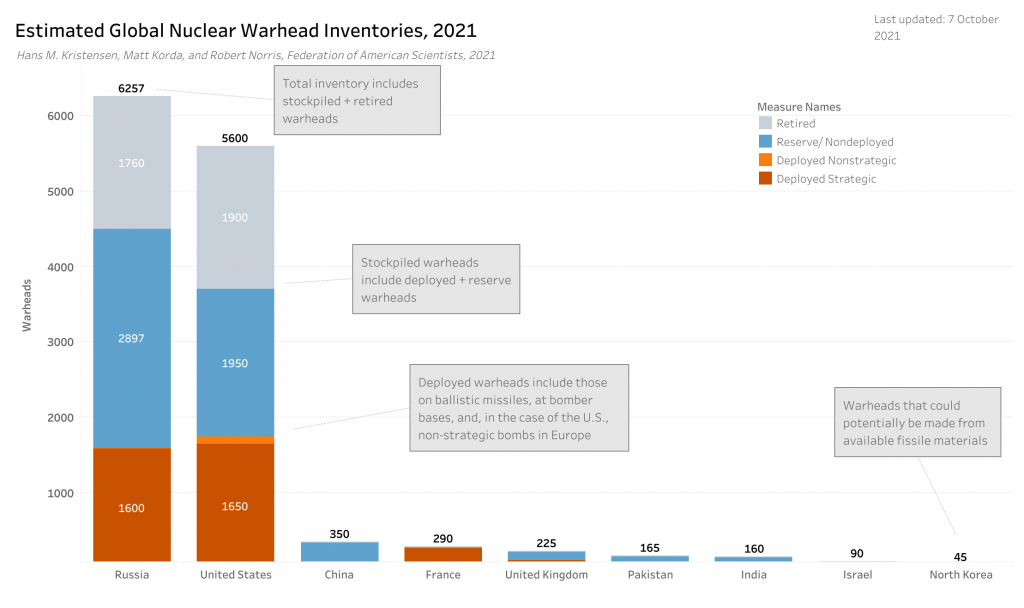Many thanks to Hans Kristensen and the Federation of American Scientists for the use of this information, see https://fas.org/issues/nuclear-weapons/status-world-nuclear-forces/

| Status of World Nuclear Forces 2021 | |||||
| Country | Deployed Strategic | Deployed Nonstrategic | Reserve/ Nondeployed | Military Stockpilea | Total Inventoryb |
| Russia | 1,600c | 0d | 2,897e | 4,497 | 6,257f |
| United States | 1,700g | 100h | 2,000i | 3,800j | 5,550k |
| France | 280l | n.a. | 10l | 290 | 290 |
| China | 0m | ? | 350 | 350 | 350m |
| United Kingdom | 120n | n.a. | 105 | 225 | 225n |
| Israel | 0 | n.a. | 90 | 90 | 90o |
| Pakistan | 0 | n.a. | 165 | 165 | 165p |
| India | 0 | n.a. | 160 | 160 | 160q |
| North Korea | 0 | n.a. | (45) | (45) | (45)r |
| Total:s | ~3,700 | ~100 | ~5,820 | ~9,600 | ~13,100 |
How to read this table: “Deployed strategic warheads” are those deployed on intercontinental missiles and at heavy bomber bases. “Deployed nonstrategic warheads” are those deployed on bases with operational short-range delivery systems. “Reserve/Nondeployed” warheads are those not deployed on launchers and in storage (weapons at bomber bases are considered deployed). The “military stockpile” includes active and inactive warheads that are in the custody of the military and earmarked for use by commissioned deliver vehicles. The “total inventory” includes warheads in the military stockpile as well as retired, but still intact, warheads in the queue for dismantlement. For additional guidance, see endnotes below (note: as estimates are updated, they may vary from the printed materials below).
In historical context, the number of nuclear weapons in the world has declined significantly since the Cold War: down from a peak of approximately 70,300 in 1986 to an estimated 13,100 in early-2021. Government officials often portray that accomplishment as a result of current or recent arms control agreements, but the overwhelming portion of the reduction happened in the 1990s. Some also compare today’s numbers with that of the 1950s, but that is like comparing apples and oranges; today’s forces are vastly more capable.
The pace of reduction has slowed significantly compared with the 1990s and appears to continue only because of dismantlement of retired weapons; the military stockpiles (operational nuclear weapons) are increasing again.